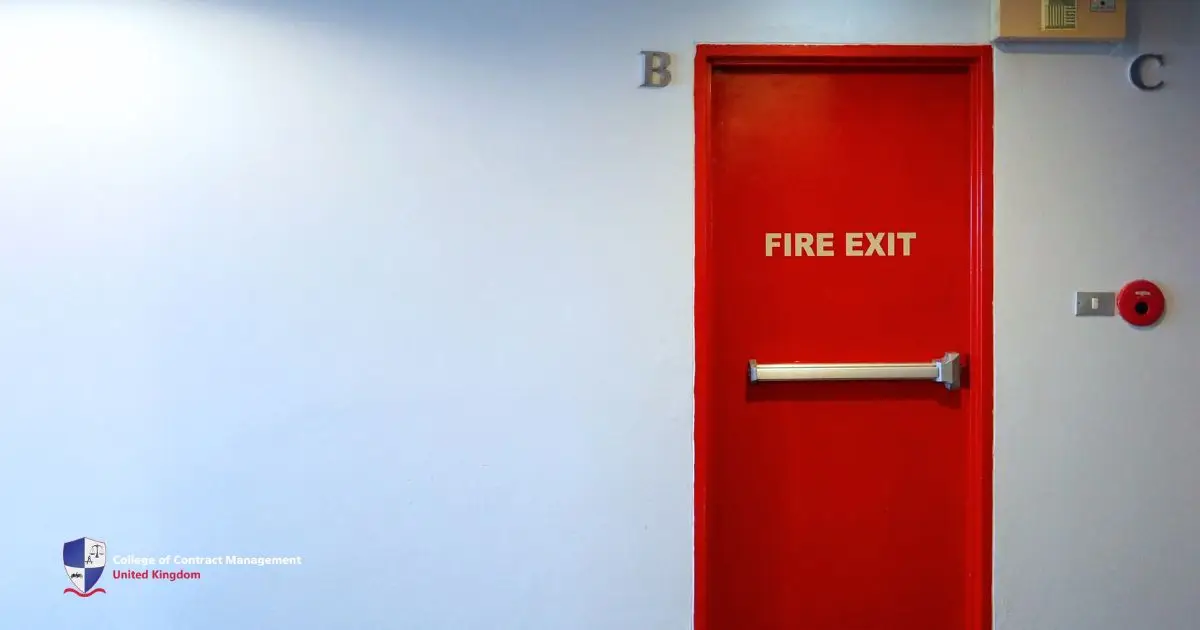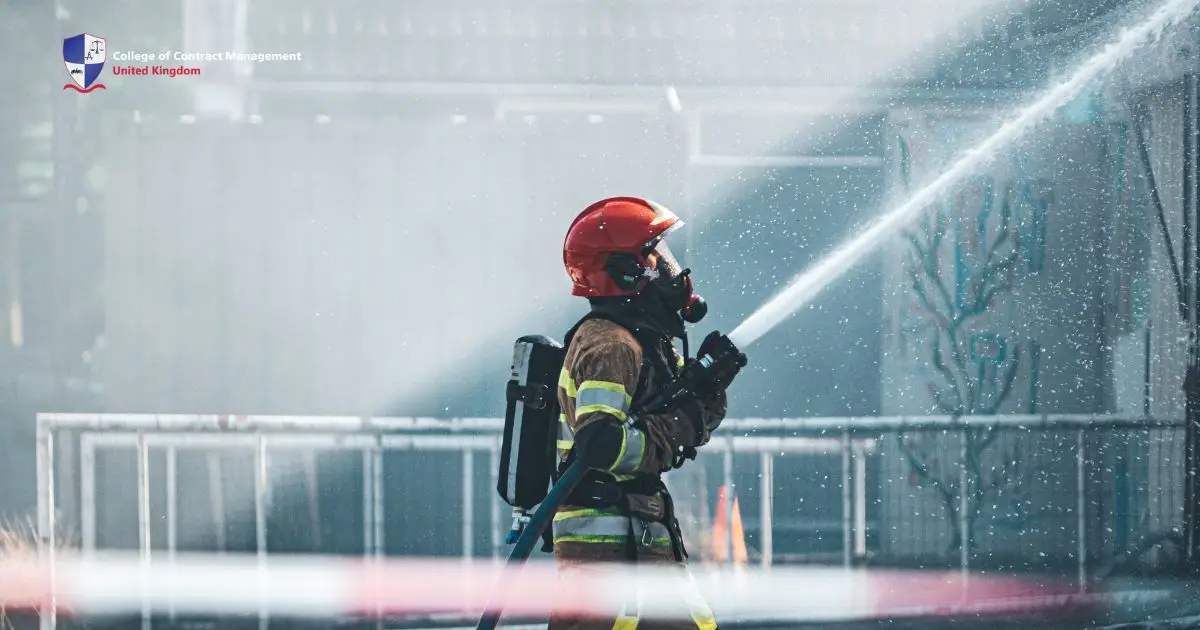Every premise has its risks of catching fire. In that case, we need to prevent it by doing a fire risk assessment. This is to make sure your building is safe for people to live, work, and stay in. It saves lives and makes your business good by staying safe and compliant.
Fire risk assessment is a tool to measure your building's fire safety. A thoughtful look at your premises can prevent fires that will not only damage people's lives but also cost you a lot of money. Therefore, it is becoming important to find out the potential risk for you to improve your fire safety precautions.
What is fire risk assessment?
Fire risk assessment is a legal requirement that helps identify potential fire hazards in a building. During the assessment, you evaluate each hazard and categorise it as high, medium, or low risk. After that, you can treat them based on their condition. You can also put a fire extinguisher in a place that has a high risk of fire.
This assessment is specifically more vital in places with high foot traffic, like commercial buildings, apartments, offices, and similar. It will help the management to identify potential fire hazards, as well as people who may be affected. As a result, they can evaluate the risk and implement the reduced treatment, or even eliminate it.
Therefore, fire risk assessment is a legal requirement for many buildings to comply with. If you are the one responsible for managing the building, having broader knowledge in this area is crucial. This is because you need to take appropriate action if there are potential fire risks and hazards in your buildings.
The Regulatory Reform (Fire Safety) Order 2005
The Regulatory Reform (Fire Safety) Order 2005 is a framework for compliance with regulatory fire safety in the United Kingdom (UK) premises. This includes non-domestic premises, like workplaces and residential buildings in England and Wales. Following the Grenfell Tower tragedy, the 2018 Hackitt Review called for mandatory whole-building fire safety at all stages, from design to occupation.
Simultaneously, the Ministry for Housing, Communities and Local Government complemented it with The Call for Evidence in a process to make sure the Fire Safety Order remains effective. This is a part of the government's consideration to see the building landscape. The goal of it to make the Order effective for building safety reforms.
Assessment form
Fire risk assessment forms include a thorough inspection of the building to identify potential fire hazards and ensure proper fire protection. These fire hazards may consist of sources that can cause fire, such as electrical equipment, smoking, and cooking. Therefore, the form shall include the ignition sources or combustible materials within the premises. Here is what shall be included in the form:
- Fire hazards: “Have you found anything that could start a fire?”
- People at risk: “Who could be especially at risk?”
- Evaluate and act: “Have you planned escape routes?”
- Record, plan and train: “Have you planned what everyone will do if there is a fire?”
- Review: “Have you started to store chemicals or dangerous substances?”
Who is responsible for completing a fire risk assessment?
The person responsible for completing the fire risk assessment is the landlord or someone who is competent to complete the list. This includes Fire Risk Assessors, Chartered Fire Engineers, Health and Safety Officers, Facilities or Building Managers, and many more. They are the ones who have legal responsibility for the building. With that in mind, their task includes organising regular risk assessments, along with taking necessary action after finding a potential fire hazard.
Moreover, the responsible person must ensure all necessary measurements are in place. Therefore, providing training for the staff can also be conducted. This is to make sure all people in the building know what to do in case of a fire emergency. Lastly, they also need to ensure that firefighting equipment is regularly well-maintained.
The importance of assessing the fire safety guide
Fire risk assessment is important to ensure a safe environment from fire hazards. This not only saves people's lives but also gets you ready in case of a fire emergency. Carrying out an assessment can help you at all costs. This helps you identify any fire risk and allows you to reduce those risks. Additionally, this assessment is also a legal requirement, making your business comply with legal standards.
Therefore, it is recommended to have at least one staff member in your health and safety team to is trained well on assessing fire risk. It is highly recommended that they have a firefighting course in advance. As a result, they can lead a small group of assessors in your company to do fire risk assessments regularly.
Identifying fire hazards
Identifying fire hazards is an important step in fire risk assessment. This is because those substances have a high risk of starting a fire. With that in mind, you need to take care of this item once you find one. Therefore, you need to look for possible hazard sources that can cause a fire, such as:
- Candles
- Cigarettes
- Matches and lighters
- Cooking equipment
- Electrical
- Gas or oil-fired heaters
After that, you need to identify sources of fuel. In this case, look for the items that will burn relatively easily. For example, flammable materials like cardboard, paper, flammable liquids, plastics, and fabrics. They easily get burned and will spread to other fuel sources. Lastly, you need to find the main source of oxygen that can intensify a fire, like oxygen in welding processes or medical oxygen used by hospital patients.
Fire prevention
Regular fire risk assessments are essential in the building. This way is one of the ways people are doing things. By doing this, they not only ensure safety for all but also comply with the regulations. Therefore, recognising fire potential hazards is number one in the assessment process. The goal is to reduce the risk or even remove the ignition sources. Here is what you can do:
- Implementing safety protocols: This one is crucial for handling and storing flammable liquids and materials. The protocols include proper labelling, storage in designated areas, and regular inspection.
- Utilising fire safety systems: Installing fire systems can be a great deal, such as sprinklers and alarms. With this in mind, you need to have regular testing and maintenance.
- Employee training: Conducting fire safety training for your employees is also a proactive action. Educating them on fire safety protocols, evacuation procedures, and how to use firefighting equipment can prevent them from becoming too anxious when unwanted things happen.
Final consideration
All in all, fire risk assessment can help buildings remain safe for people and the environment. Therefore, conducting it regularly is crucial to prevent fire from happening. Having that in mind, understanding the fire hazards stands as a pillar in this assessment. Specifically, if you can mitigate it properly, it won’t damage your surroundings.
If you want to learn more about fire prevention through fire safety training, the College of Contract Management has many courses you can choose from regarding this topic. From fire safety, health, and regulation, to courses about fire risk assessment, the college has it all for students from all around the world. What makes you wait? Just enrol now!




